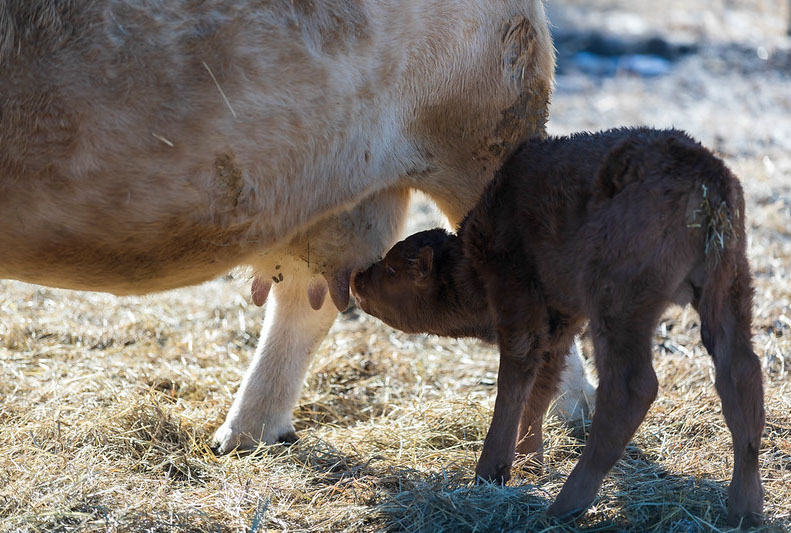
Evaluating udder quality at calving is a good time to make observations about confirmation and functionality, say beef cattle experts at Kansas State University. | Download this photo.
Cattle Chat: K-State experts share criteria for assessing udder quality
The best time to evaluate the udder is when calves are nursing
Jan. 24, 2023
By Lisa Moser, K-State Research and Extension news service
MANHATTAN, Kan. — As people age, sometimes their bodies break down and gravity takes hold in ways that they believe are not desirable. That can also be true in beef cattle when it comes to udder condition, say the experts at Kansas State University’s Beef Cattle Institute.
Speaking on a recent Cattle Chat podcast, the experts agreed that the time to evaluate the udder condition is at calving or shortly thereafter.
“The best time to assess udder condition is when the cows start nursing their calves because the udder is full of milk, and it is easy to see teat size and structure,” said veterinarian Brad White.
White advises producers to keep a record regarding udder quality at calving that can be referred to later when culling decisions are being made.
“In the fall when you check for pregnancy the udder may look fine, so it is good to be able to refer to your notes to make sure there weren’t any concerns with the udder condition during calving time,” he said.
When assessing udder quality, veterinarian Brian Lubbers looks at the udder attachment, conformation and functionality.
“As the cow gets older, some of the ligaments that hold the udder in place will begin to break down causing the udder to hang low making it more susceptible to an injury,” Lubbers said. “Also, producers need to look at the teat size to be sure that they are not abnormally large, making it difficult for the calf to nurse.”
Lubbers also encouraged producers to observe the calves nursing to see how many quarters of the udder they can get milk from.
“If a cow has a severe case of mastitis, it may cause one or more of the quarters to no longer produce milk,” Lubbers said, adding that this condition is caused by a bacterial infection in the mammary gland that impacts the teats.
Along with evaluating the udder, beef cattle nutritionist Phillip Lancaster encourages producers to look at the quality of the calf she is raising.
“If the cow has a high genetic milk potential but only three functioning quarters, she may be fine raising a calf,” Lancaster said. “Look at the average weaning weight of the calves and see how her calf rates. As long as the calf is getting the nutrition they need, I’d keep her in the herd because she is making producers money after she passes the five-year mark.”
To hear the full discussion, listen to the Cattle Chat podcast online or through your preferred streaming platform.

